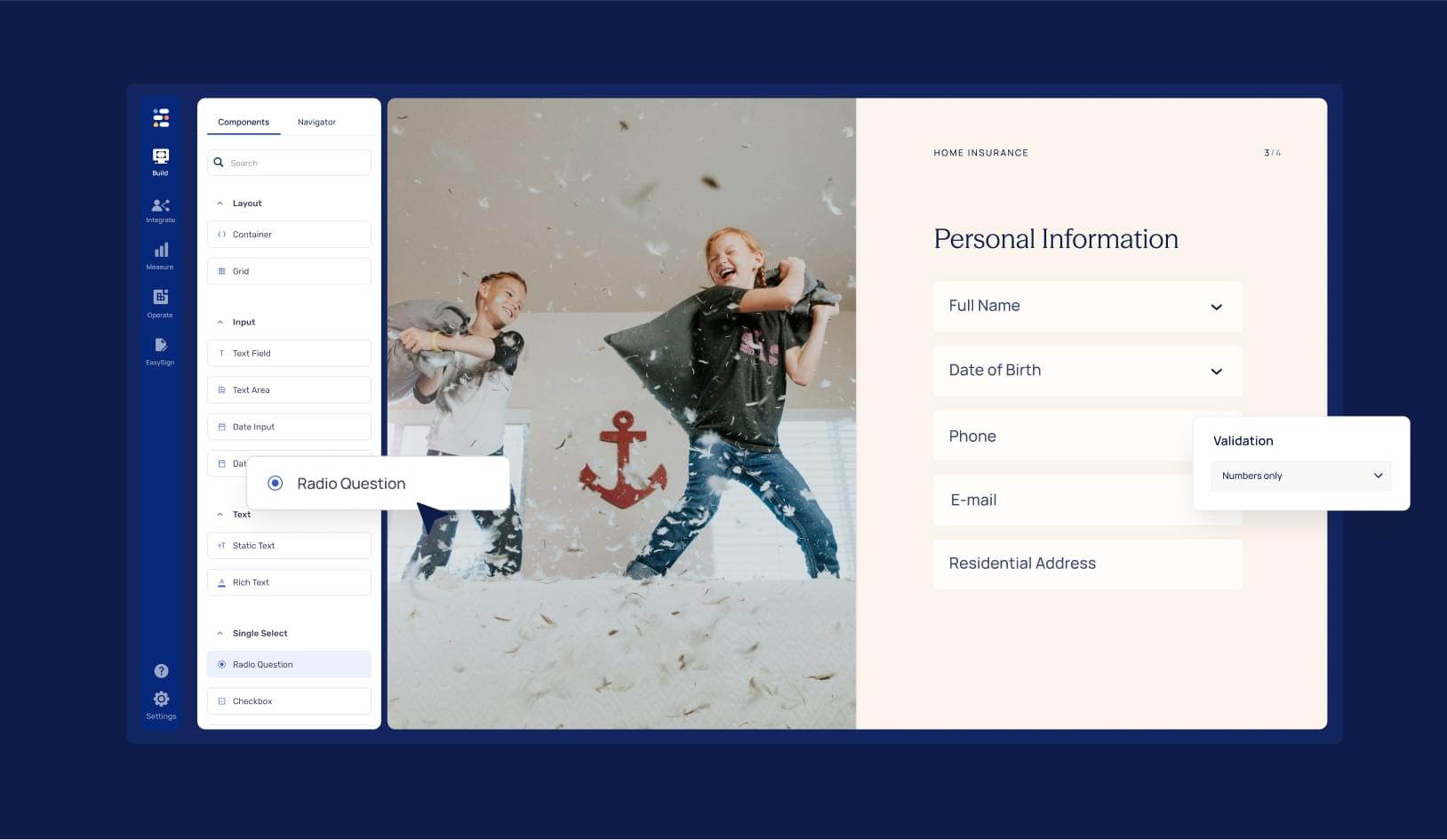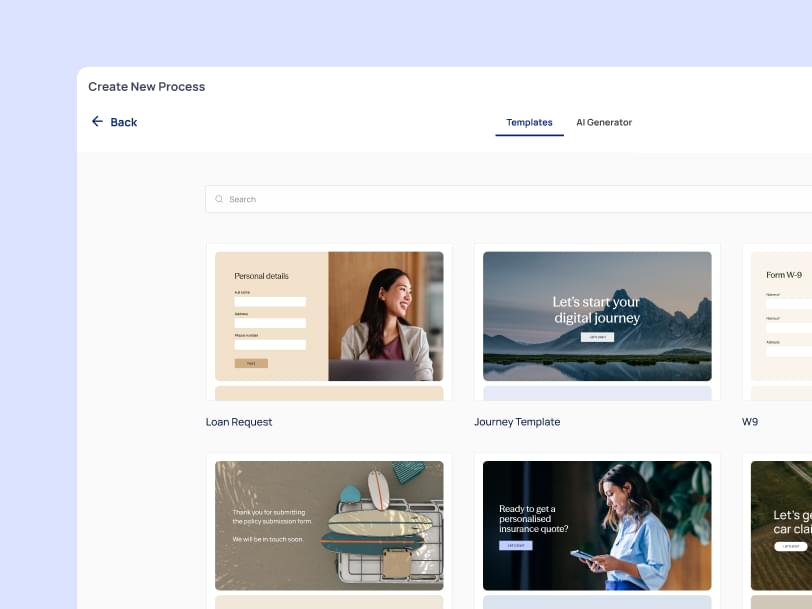TL;DR
- KYC in 2026 is moving from manual uploads and static PDFs to instant document capture, real-time prefill, and dynamic workflows.
- Drop-offs are reduced by AI-guided journeys, omnichannel support, and smart validations that catch errors before submission.
- Banks and fintechs are adopting workflow platforms that integrate directly with Salesforce/core systems, enabling compliance without slowing down customer onboarding.
- Winners in 2026 will be those who treat KYC not as a hurdle, but as a frictionless digital experience.
Introduction
For years, Know Your Customer (KYC) checks have been a necessary pain point in banking and fintech. Customers expect digital-first onboarding, yet many institutions still rely on PDF forms, manual uploads, and endless back-and-forth emails.
The result? High abandonment rates, compliance bottlenecks, and frustrated customers.
In 2026, that’s changing. Powered by AI, no-code workflow builders, and deeper system integration, digital KYC is shifting from a compliance afterthought to a strategic advantage. Institutions that embrace instant uploads, prefill, and fewer drop-offs are not only staying compliant—they’re winning customers.
Why drop-offs still plague KYC
KYC isn’t simple: customers are asked to upload IDs, proof of address, tax forms, and in many cases, involve co-signers, advisors, or directors. The complexity leads to:
- Abandonment — lengthy forms and unclear requirements push customers away.
- Errors — expired IDs, wrong file formats, missing data.
- Rework — compliance teams chasing documents via email or calls.
- Slow onboarding — turning what should take hours into weeks.
According to industry benchmarks, 20–40% of customers abandon onboarding when asked for documents. The challenge is clear: simplify the process without compromising compliance.
The 2026 shift: from manual to dynamic
1. Instant uploads
Instead of static file fields, modern KYC flows support:
- Mobile capture: customers snap a photo of their passport, driver’s license, or utility bill.
- Smart validations: system checks in real time whether the ID is expired, the file is blurry, or the address matches the provided data.
- Direct API pulls: in some regions, customers can grant permission to pull documents directly from government or financial databases.
This eliminates the trial-and-error loop that frustrates both customers and compliance teams.
2. Prefill from trusted sources
2026 KYC journeys leverage data that already exists:
- Salesforce integration pre-populates known customer fields.
- Document OCR and classification extract names, dates, and IDs automatically.
Third-party enrichment APIs (sanctions, PEPs, credit bureaus) provide instant risk insights.
Prefill reduces friction: customers confirm rather than retype, cutting errors and saving minutes on every journey.
3. AI-guided, multi-step workflows
Static forms create friction because they treat every user the same. AI-guided workflows adapt in real time:
- If an ID is valid, the flow skips unnecessary questions.
- If a mismatch occurs, the flow prompts for exactly what’s needed.
- If multiple parties are involved (investors, directors, guarantors), the workflow dynamically adds them in the correct order.
This personalization minimizes drop-offs by only asking the right questions at the right time.

4. Omnichannel and multi-party support
Not every customer wants to complete KYC the same way. In 2026
- Customers can switch devices mid-process (start on desktop, finish on mobile).
- Institutions can invite multiple participants with role-based permissions (e.g., co-signer, legal advisor).
- Links can be delivered via email, SMS, or secure portal—whatever the customer prefers.
The result: fewer delays, less chasing, more completions.
5. Real-time compliance, not post-hoc checks
Traditionally, compliance reviews happened after submission—meaning errors were only discovered days later. In 2026
- Sanctions and PEP checks run instantly as data is entered.
- Expiry dates, address mismatches, and jurisdiction rules are flagged in real time.
- AI extraction ensures data is mapped correctly to Salesforce or the banking core.
This reduces manual remediation and accelerates approvals.
The technology powering KYC in 2026
Workflow platforms
- EasySend: a no-code digital journey builder that turns static forms into adaptive, multi-step workflows. Native Salesforce integration, role-based permissions, and AI-powered validations make it ideal for complex, regulated industries.
- Persona / Alloy: orchestration platforms that centralize decisioning across multiple vendors and data sources.
- Verification vendors (Veriff, Jumio, Trulioo, Socure, Sumsub): provide the ID document and biometric checks at scale.
Together, these form a KYC stack:
- Workflow layer (customer-facing data intake, eSign, multi-party orchestration).
- Verification layer (ID + biometric checks).
- Decisioning layer (risk rules, monitoring, orchestration).
Business impact: why fewer drop-offs matter
Every abandoned onboarding is a lost customer. By adopting instant uploads and prefill, banks and fintechs report:
- 30–50% reduction in abandonment rates.
- Onboarding times cut from weeks to hours.
- Lower compliance costs, with fewer manual interventions.
- Higher customer satisfaction scores, as journeys feel seamless and digital-first.
Final thoughts
KYC has historically been treated as a regulatory burden. In 2026, the leaders are reframing it as an opportunity to win trust, reduce friction, and drive growth.
By embracing instant uploads, prefill, and AI-guided workflows, financial institutions can turn compliance into a competitive edge.
EasySend helps banks and fintechs build no-code, Salesforce-native KYC journeys that reduce drop-offs, enable instant validations, and support multi-party, omnichannel processes.





